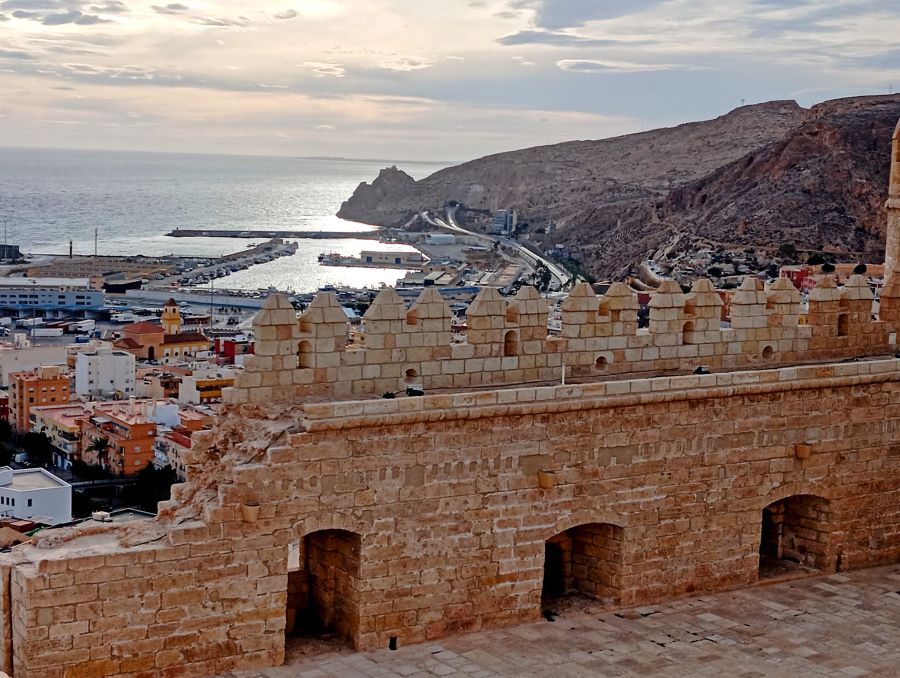Free Things to See and Do in Almería, Spain
Almeria in the southeastern region of Spain is one of the last areas of Spain that is totally hidden and off the beaten path. Undiscovered by tourists visiting the popular attractions of Malaga, Granada and Seville, Almeria has a lot of its history, Moorish heritage, amazing cuisine and gorgeous beaches without the crazy tourists visiting at the peak seasons of the year. Only Spanish visitors end up exploring the areas of Almeria or the smaller beach scenes and national parks and even the only true desert in Europe called the Tabernas.
In this post, we share all the fantastic free things you can do around the city and region of Almeria with these six perfect attractions and fun places to explore in the area.
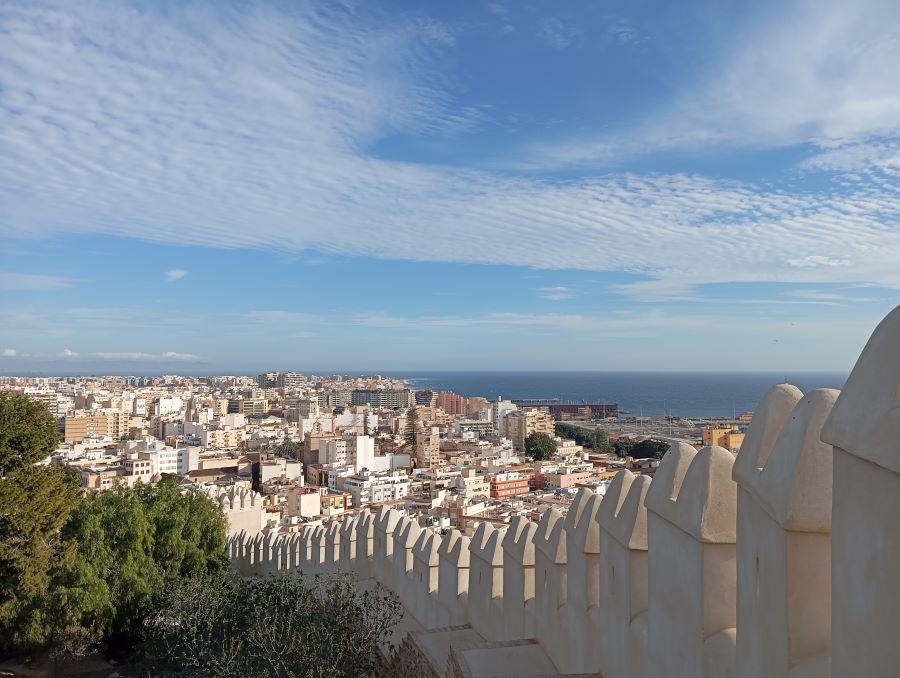
1. Visit the Alcazaba
The Muslim rule of Andalusia through the many centuries created the second largest citadel in Andalusia called the Alcazaba of Almeria. This impressive fortress is the 2nd largest after the Alhambra located in Granada. The Alcazaba was built as a fortress to keep away invaders, pirates from the coastal areas of the rgion. Walking up the ancient stone steps to the entrance you eventually enter the stunning lush gardens, ruins and impressive views of the top of the citadel and ramparts of the fortress areas.
Exploring the three interior secctions from the Medieval towers, the gardens and beautiful squares to the mosques and churches that replaced them along with ruins of the palaces and other significant structures gives you a real glimpse of the power and dominance of the Moorish rulters of the areas and then conversion to Spanish Catholic dominance in the area.
Here’s what I found on your Alcazaba of Almería query—straightforward, credible details you can use:
Address
The Alcazaba is located at Calle Almanzor, s/n, 04002 Almería, Spain. It’s perched on a hill in Almería’s historic core.
Cost (Admission)
- Free for EU citizens with valid ID.
- €1.50 for visitors from other countries (non–EU). (inspain.org, Junta de Andalucía)
Official Website
The Alcazaba’s official page is hosted by the Junta de Andalucía:
http://www.museosdeandalucia.es/web/conjuntomonumentallaalcazabaalmeria (Junta de Andalucía)
Snapshot Table
| Detail | Info |
|---|---|
| Address | Calle Almanzor, s/n, 04002 Almería, Spain |
| Cost | EU citizens: Free · Others: €1.50 |
| Website | Official: museosdeandalucia.es/alcazaba |
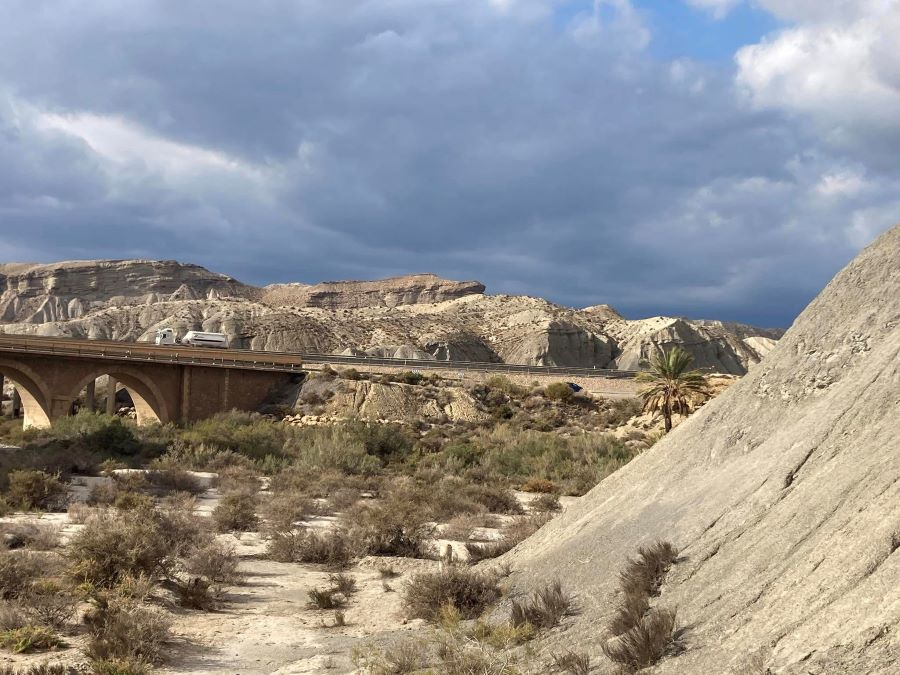
2. Explore the Tabernas Desert
The only true desert located in Europe, the landscape is a mixture of bandlands, canyons, ravines and mountains with Red and Orange hued landscape. Seeped in historic western vibe, the area was filmed in a variety of western and desert scape scnes with an old manufactured town square in Tabernas that you can explore the cool movie sets and false front buildings to famous movies like “Laurence of Arabia”, The Good, the Bad and the Ugly” and even “Cleopatra” amking this an easy place to shoot their own Hollywood mini set.
The Tabernas Desert is raw, desolate and and rough landscape that can easily be a pass through landscape but now a historic site that showcases the Hollywood desertscape that was easy to film in.
Here are the top things to see:
1. Wild West Film Sets and Theme Parks
Several classic spaghetti westerns were filmed here, including Sergio Leone’s movies. You can still visit the sets at Oasys Mini Hollywood, Fort Bravo, and Western Leone, which now operate as themed attractions with shows, old saloons, horse-riding displays, and museums.
2. Desert Landscapes and Viewpoints
The dry canyons, rugged ravines, and strange rock formations make the desert feel like something out of Arizona. Hiking or driving through these landscapes gives you dramatic views, especially at sunrise or sunset.
3. Tabernas Castle (Castillo de Tabernas)
Overlooking the desert, this medieval Moorish castle dates back to the 11th century. Although in ruins, it offers panoramic views of the desert plains and is a great spot to understand the region’s strategic past.
4. Flora and Fauna
Despite its barren appearance, the desert is home to unique plants, reptiles, and birdlife. If you enjoy nature walks, you’ll see species adapted to this arid environment that don’t grow elsewhere in Spain.
5. Film History Trails
Beyond the theme parks, you can explore actual filming locations scattered around the desert. Many movies, from Lawrence of Arabia to modern productions like Game of Thrones, used this landscape.
6. Tabernas Town
The nearby town of Tabernas is worth a short stop, with its whitewashed streets, local cafés, and connections to both Moorish history and the golden age of western films.
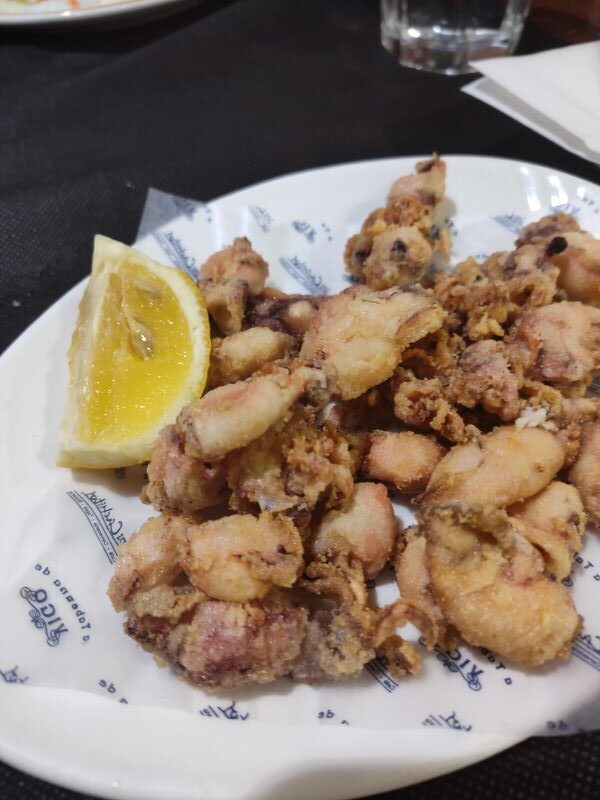
3. Indulge in Delicious Tapas
The city is a gourmet city where tapas are offered free with purhase of a drink from that establishment. Tapas are offered complimentary when you also order a local drink with delicious pane con tomate, egg tortilla, cheese, potato fritters or local jamon. Also acessible is the amazing local seafood options like squid, mussels, octopus and different fish caught in the area that are made with simple and delicious dishes that shine with local produced or sourced ingredients. Tapas are typically offered complementary in Tapas bars with a purchase of a drink but you’ll find more tradition, fusion and even gastrobars to choose from below;
1. Traditional Tapas
- Tortilla Española – Classic Spanish omelette with potatoes and onions.
- Patatas a lo Pobre – Fried potatoes with peppers, onions, and sometimes egg.
- Croquetas – Creamy fried croquettes filled with ham, cod, or chicken.
2. Seafood Tapas
- Calamares a la Andaluza – Lightly battered and fried squid rings.
- Gambas a la Plancha – Grilled prawns, simply seasoned with salt.
- Boquerones en Vinagre – Fresh anchovies marinated in vinegar, garlic, and parsley.
- Pulpo a la Gallega – Octopus slices with paprika, olive oil, and sea salt.
3. Meat Tapas
- Chorizo al Vino – Spicy sausage cooked in red wine.
- Albóndigas – Small meatballs often served in tomato sauce.
- Jamón Ibérico – Thinly sliced Iberian ham, a Spanish specialty.
4. Local Specialties
- Cherigan – A local favorite: toasted bread with toppings like tuna, ham, or eggplant.
- Tabernero – A tapa with peppers, tomato, onion, and sometimes tuna or sausage, typical of Almería.
- Migas – Fried breadcrumbs mixed with garlic, peppers, and sometimes chorizo or sardines, usually eaten on rainy days.
5. Vegetable and Light Tapas
- Ensaladilla Rusa – Spanish potato salad with tuna, peas, and mayonnaise.
- Pimientos Asados – Roasted peppers dressed with olive oil.
- Gazpacho Andaluz – Chilled tomato-based soup, refreshing in the heat.
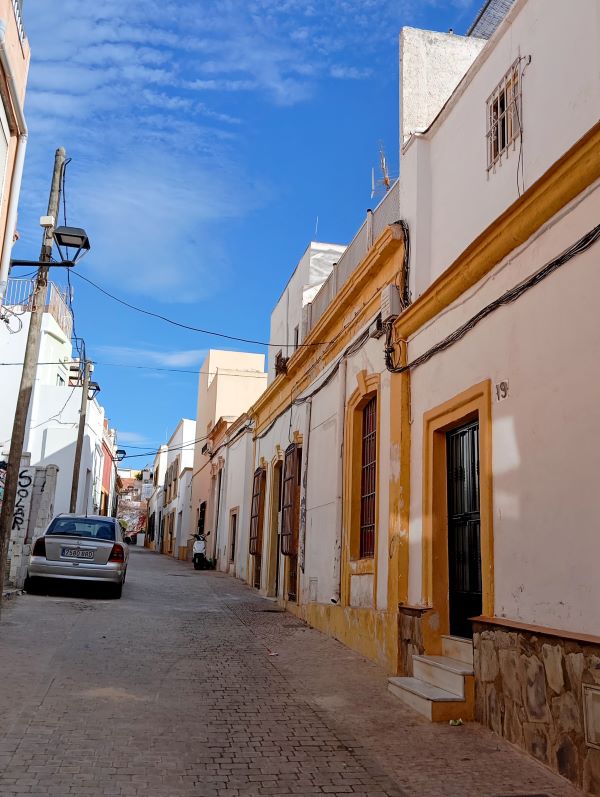
4. Explore heart of the City Center
You can enjoy the shopping, dining and discover the Old City Center part of Almeria and discover the unique and authentic parts of this Spanish city along with visiting the commercial areas, the Mercado Central and the fabulous Cathedral along with narrow small streets of the downtown district. You’ll find unique boutique galleries and shops to explore, high end street shopping or just hang out in the local cafes or public squares in the downtown district.
If you’d like to unwind and treat yourself to something nice, take yourself out for a round of shopping and discover authentic Spanish marketplaces, boutique stores and staple Spanish brands. Stop by Mercado Central for a rich market experience. Sample some delicious treats, then head to nearby Paseo de Almería, the main commercial artery of the city.
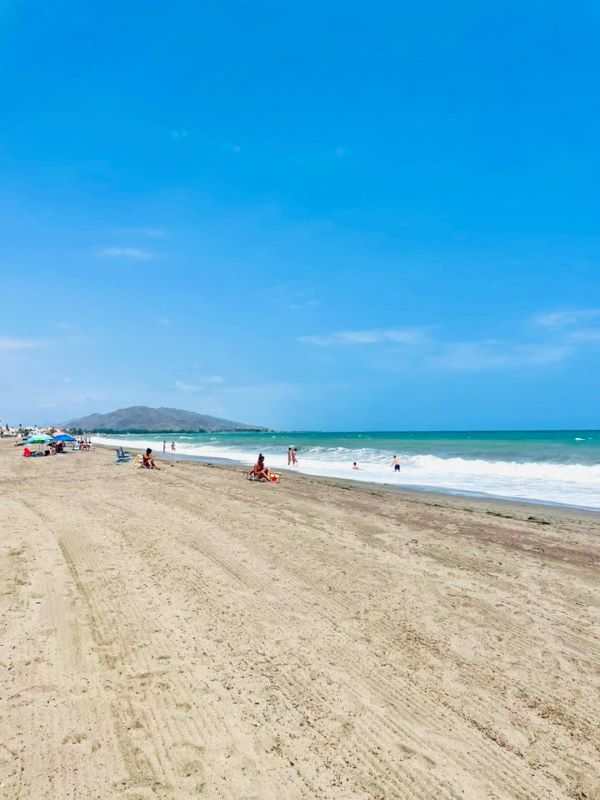
5. Head to Almeria’s fantastic beaches
These are probably the most unknown beaches to enjoy in all of Spain and devoid of tourists visiting the area. Accessible beaches to the city to even more remote little coves and national parks, you’ll be amazed by the gorgeous coastline and wide stretches of beaches to explore here. Here are the most popular to visit around the Almeria coastline below:
- Playa de los Genoveses (Cabo de Gata Natural Park)
- Unspoiled, wide sandy bay with shallow waters.
- Surrounded by volcanic hills, no buildings or facilities.
- Great for families and those looking for a natural setting.
- Playa de Mónsul (Cabo de Gata Natural Park)
- Famous for its volcanic rock formations and dune backdrop.
- Featured in films like Indiana Jones.
- Clear waters, popular with photographers and hikers.
- Playa de San José
- Located in the town of San José, with easy access.
- Mix of natural beauty and amenities (restaurants, cafes, rentals).
- Ideal for travelers wanting comfort with scenic surroundings.
- Playa de las Salinas (Cabo de Gata Natural Park)
- Long stretch of sand with views of salt flats and flamingos.
- Wide open, quiet atmosphere.
- Great for birdwatching and long walks.
- Playa de Aguadulce
- Close to Almería city, well-developed.
- Lined with bars, restaurants, and water sports facilities.
- Popular with families and locals.
- Playa de Zapillo (Almería City Beach)
- The main urban beach in Almería.
- Easily accessible, with a lively promenade.
- Good choice if you want to stay close to the city center.
- Playa de los Muertos (Carboneras)
- Crystal-clear water and fine pebbles.
- Often listed as one of Spain’s most beautiful beaches.
- Somewhat steep access, but worth the effort.
- Playa de Vera
- Known for its long sandy coast and relaxed vibe.
- Includes a well-known nudist section.
- Popular for resorts, family vacations, and water activities.
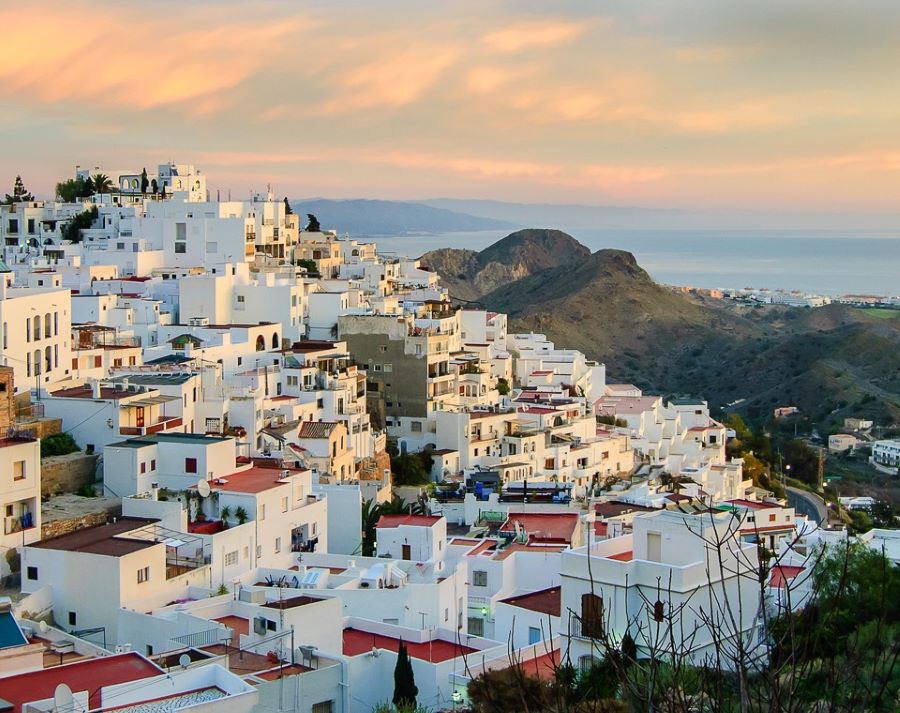
6. Explore the White Villages of Almeria
Here’s a complete list of the White Villages (Pueblos Blancos) of Almería that travelers often explore in the area
- Mojácar
- Perched on a hillside with winding alleys and whitewashed homes.
- Famous for sea views and Moorish heritage.
- Lively plaza, artisan shops, and nearby beaches.
- Níjar
- Known for traditional crafts like ceramics and jarapas (woven rugs).
- White houses with bright blue doors and flower pots.
- Gateway to Cabo de Gata Natural Park.
- Lucainena de las Torres
- Quiet village in the Sierra Alhamilla mountains.
- Recognized as one of Spain’s “most beautiful villages.”
- Offers old lime kilns, church square, and nearby hiking trails.
- Laujar de Andarax
- Set in the Alpujarra Almeriense.
- Surrounded by vineyards, chestnut forests, and mountain scenery.
- Ties to Moorish history and traditional wine-making.
- Vélez-Blanco
- Crowned by a Renaissance castle (Marquesado de los Vélez).
- Narrow streets with whitewashed homes.
- Strong historical and cultural presence.
- Sorbas
- Famous for “hanging houses” perched on a cliff edge.
- Traditional Andalusian feel with quiet plazas.
- Close to karst caves and natural landscapes.
- Albánchez
- Peaceful mountain setting, small and less touristed.
- Traditional village life with historic church and fountains.
- Good stop for travelers wanting an authentic, rural experience.
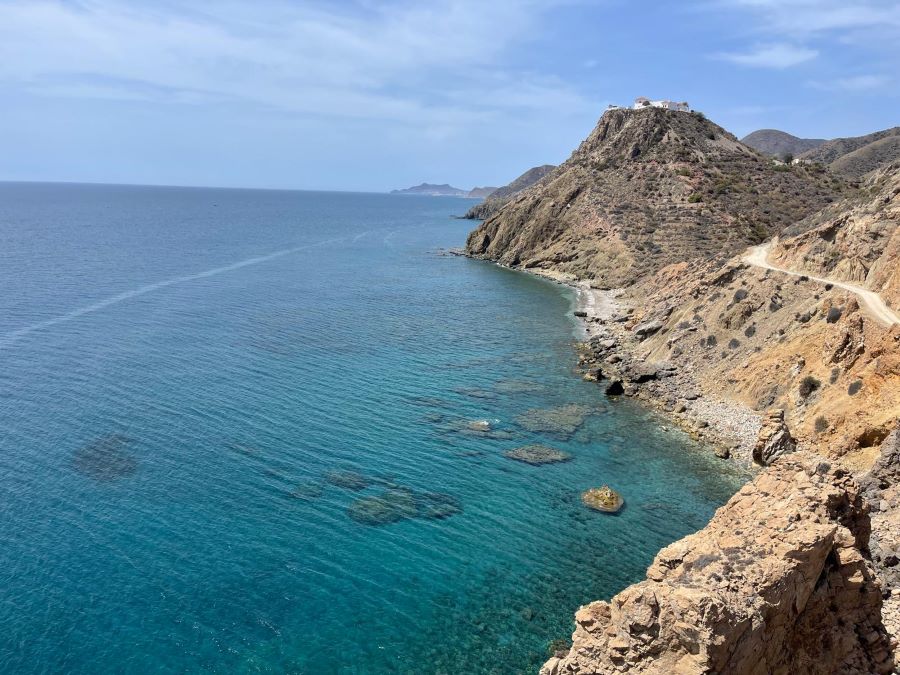
Best weather and best time to visit in Almeria
Almería enjoys one of the sunniest and driest climates in all of Europe, with more than 3,000 hours of sunshine a year and very little rainfall. That makes it a year-round destination, but some seasons are more comfortable than others depending on what you want to do.
Spring (March–May)
- Arguably the best time to visit.
- Mild to warm temperatures (around 18–25°C / 64–77°F).
- Ideal for sightseeing, hiking in the Cabo de Gata Natural Park, and enjoying the beaches before summer crowds arrive.
Summer (June–August)
- Hot and dry, with temperatures often climbing above 35°C (95°F).
- Best for beach lovers who want guaranteed sunshine and warm sea water.
- Inland areas like the Tabernas Desert can feel very harsh at midday.
Autumn (September–November)
- Warm and pleasant, especially in September and October.
- Sea temperatures remain good for swimming until late October.
- Fewer tourists, so it’s easier to enjoy cultural sites and natural parks at a relaxed pace.
Winter (December–February)
- Very mild compared to most of Europe, averaging 12–18°C (54–64°F).
- Rarely rainy, and sunshine is still common.
- Great if you want a quiet trip, though not prime beach weather.
Overall, the best times to visit Almería are spring (March–May) and autumn (September–October), when the weather is warm but not overwhelming, and you can balance time on the coast with exploring historic sites and natural landscapes.
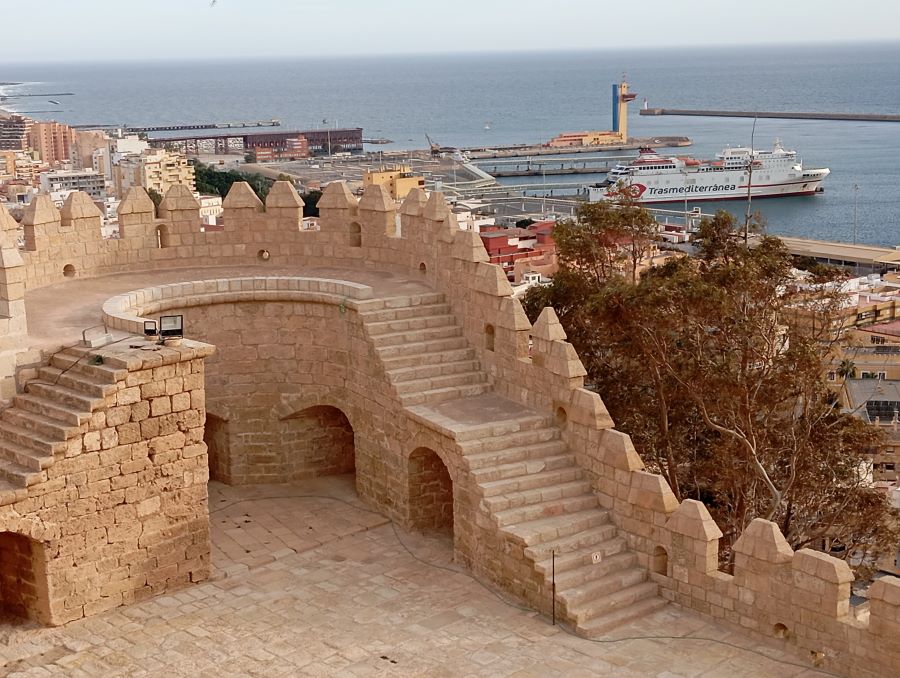
Further reading – check out these other places to visit in Almeria
If you are planning on visiting more of the region or around Andalusia, check out these other topics
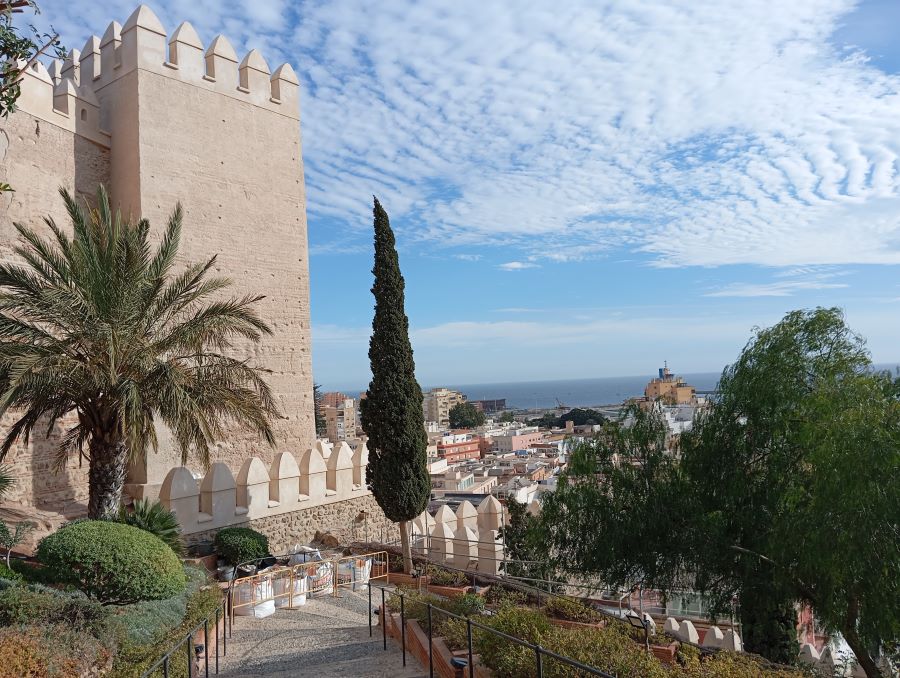
Conclusion Free things to do in Almeria
Visiting Almedia, Spain, offers a captivating blend of natural beauty, cultural heritage especially in visiting the Alcazaba. The most iconic treasure of the region, the Alcazaba, the historic district and Tabernas is grand and impressive. Afterwards strolling along the Old town with its fortress like cathedral or savoring local seafood at charming eateries that is predominant in the area is an easy and wonderful pastime, Almeria promises a memorable experience. to explore more of the coastal charms, hillside white villages, beaches and other unique features of the area.
As the sun sets over the Mediterranean, you’ll carry with you the echoes of history from the historic Alcazaba, the salty breeze of the coastline and white villages in Almeria, and the flavors of regional Spanish cuisine. Almeria’s unique charm and the warmth of its people make it a perfect
Thanks for checking out Visit Spain and Mediterranean, please do visit other relevant posts on the website.

About author – Noel Morata
After relocating from the United States to Andalusia in 2024, I’ve made it my mission to discover every corner of Spain. Based just east of Granada, I’ve spent over 12 months exploring Andalusia province and the rest of Spain, including multiple extended visits to Granada throughout different seasons. My background in Spanish cultural studies and years of residence and exploring all of Spain have given me unique insight into the region’s historical significance, local customs, and culinary traditions.
I regularly update my guides with the latest information gathered through personal visits and relationships with local tourism officials, always seeking what’s new and exciting in each destination. As a self-proclaimed foodie, I’m passionate about discovering authentic local markets and regional specialties.
Disclosure – some of the links above to various tours, transportation and hotels are affiliate links that benefits our site if you book here and we appreciate your support. The links are competitive, and you are not paying above what other affiliates provide.

